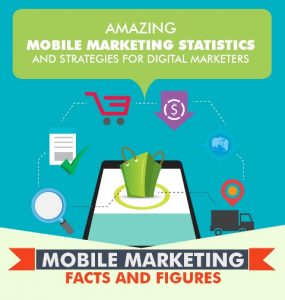Visionary marketers are challenging, risk-taking, determined and receptive and these are all traits that can be nurtured and developed. Here, learn how members of Marketing Week’s Vision 100 transformed themselves into top-class practitioners essential to their brands’ success.
Businesses look towards their marketing teams for the most innovative, creative and, above all, visionary thinkers to solve their problems and drive growth. From the executives on the board to grass-roots staff, companies need marketers who have visionary abilities to spot opportunities and ‘join the dots’ invisible to others.
The inaugural Marketing Week Vision 100, in association with Adobe, celebrates the most visionary people working in marketing today, including those at the cutting edge of technology and marketers who have created genuine change at their brand.
Marketing Week selected the list on the basis of seven criteria (see below) and conducted interviews with all of the featured marketers to gain deeper insights into the principles that guide their work, their sources of inspiration and the defining ‘light-bulb’ moments of their careers.
Visionary people are the product of both nature and nurture combined, according to psychologist, author and Marketing Week columnist Nathalie Nahai (see below). She notes that while biology is an important determinant of a person’s creativity, there are also behaviours that marketers can adopt to become more inspirational and visionary in their outlook.
The views of the Vision 100 and the different approaches to their craft provide a guide for all marketers seeking to fine-tune their creative and strategic abilities.
Trust your gut… to an extent
A common theme among the Vision 100 marketers is the importance of putting faith in ‘gut instinct’. The proliferation of ‘big data’ and consumer insight, as well as the need to factor in risk and return on investment, means marketers often plan their campaigns with high levels of scientific precision.
However, several senior figures in the Vision 100 argue that being bold and going with gut instinct is still an important means of achieving success in today’s data-heavy age.
PepsiCo Europe’s head of marketing and innovation, Patrick Kalotis, says the best advice he has received in his career involved putting more faith in his own instincts. “I was told data and statistics can sometimes be the most scientific way of avoiding a confrontation with reality,” he says. “I believe this was a fancy way of saying ‘you also have to trust your gut’.”

It’s hugely important to have a strong vision as well as metrics. I trust my instincts in what is going to fly – Carol Cork, Privatefly
Meanwhile, Carol Cork, sales and marketing director of jet booking network PrivateFly, suggests that “there are no rights and wrongs” in marketing. “Gut feel is not always something you can measure but it’s hugely important to have a strong vision as well as metrics,” she says. “I trust my instincts in what is going to fly.”
Psychologist Nahai argues that the debate of whether marketing is an art or science is a “red herring” that presents the question in overly simplistic terms. She believes that the most visionary marketers are those who can harness their instincts while remaining open to new ideas.
For example, she notes that economist and author Noreena Hertz has advocated that people in creative roles appoint a ‘challenger-in-chief’ who can consistently challenge their views and encourage them to consider alternatives.
“Gut instinct can be fabulous but it can also be extraordinarily misleading,” says Nahai. “The key thing is to cultivate an approach in which you are aware of and attune to your gut instincts but are also able to take in conflicting information that goes against what you might initially think.”
Ask yourself tough questions
One way for marketers to take on board conflicting views is to gain experience in different divisions within their organisations. Many of the Vision 100 credit their background in a range of roles for helping them to make better decisions as marketers.
For example, Warburtons marketing director Mark Simester describes his decision to work in a sales-focused account management role following a stint as a brand manager as one of the best of his career. Honda’s head of European marketing, Martin Moll, also says that previous roles in sales, business planning and public relations have “helped me see the different priorities and perspectives within business functions”.
In addition to gaining diverse experience, Nahai believes that marketers can become sharper thinkers by taking the time to ponder difficult questions and by venturing outside their comfort zones. She notes that a person’s subconscious is “constantly working” to pull together information and that this ultimately leads to the ‘light-bulb moment’ that generates ideas.
“Ask yourself a question – it could be an open-ended question like how can we do something unusual with our customers that they will find interesting? – and don’t seek to answer it straight away,” says Nahai.
“Because the brain doesn’t like unanswered questions, your subconscious will work on it. In other words, you have primed yourself to look for opportunities and information in your environment that can help give you the solution.”
Take ideas from others
However, visionary does not necessarily mean an ability to come up with completely spontaneous ideas. The Vision 100 shows that marketers often draw inspiration from their peers and use ideas deployed by other brands to improve their own campaigns and activations. Much of this stems from a desire among visionary marketers to continually learn and develop their skills.
Troy Warfield, EMEA chief commercial officer at car rental firm Avis Budget, says he believes in “the power of connected creativity” and in the importance of having “a great network of friends” across the marketing industry. “Connected creativity has allowed me, through my many experiences at Unilever, Kimberly Clark and Avis Budget and a wonderful network of industry colleagues, to bring what seem to be diverse ideas together to grow the business,” he adds.
Meanwhile David Wheldon, head of brand, reputation and citizenship at Barclays , has borrowed the emotive and ethical marketing approach of brands like John Lewis in an attempt to put “clear turquoise water” between the bank and its competitors. Barclays’ ‘values-led approach’ includes its Life Skills scheme to help young people into work and a major campaign around its sponsorship of the Premier League that focuses on the experience of ordinary fans. However, the bank has yet to convince shareholders of its pay and bonus policies following protests at its AGM last week.
Wheldon argues that marketers can take their ideas from other sources provided that their own campaigns resonate with consumers. YouGov BrandIndex data confirms that Barclays has seen some uplift in brand perception over the past year as a result of its new approach.
“The key is to be passionate about what you do and curious about the world around you and then you will find great ideas in all sorts of unexpected places,” suggests Wheldon. “Whether they are new or not is an entirely different issue; some of the best marketing ideas are actually the recycling of old ideas made fresh by their execution.”
Many marketers in the Vision 100 also highlight the importance of having an ‘always on’ approach to learning in which they are receptive to new ideas from all areas of their own lives. Gill Moore, group marketing director at New Look, says: “Ideas can spring from anywhere. I do a lot of travelling and naturally absorb everything around me. I am always looking for the next best thing – being ahead of the game is paramount.”

Mentoring exposes me to the next generation of creators and marketers. Sometimes I’m the major benefactor of it – Jonathan Mildenhall, Coca-Cola
Others credit their role as a mentor to fellow marketers for helping to stir their own creativity. Jonathan Mildenhall, vice-president of global advertising strategy and creative excellence at Coca-Cola , says that mentoring is a way for him to “remain relevant”, as well as a way to “give back”.
“Mentoring is a two-way street and sometimes I certainly feel that I’m the major benefactor,” he adds. “In the US I sit on the board of Virginia Commonwealth University’s Brandcenter and when I lived in the UK I was co-chair for the IPA’s Diversity in Advertising initiative. These experiences expose me to the next generation of creators and marketers.”
Take risks
One of Marketing Week ’s criteria for inclusion in the Vision 100 is whether someone has broken the ‘rules’ of the brand category in which they operate. Such disruption occurs when marketers are willing to take risks in order to offer consumers something new.
James Watt, co-founder of craft beer brand Brewdog, makes it into the list for his role in shaking up the British beer market . The brand has succeeded in making craft beer more exciting and accessible to consumers through a business model based on crowdfunding and a rebellious marketing approach that uses vibrant branding and publicity stunts.

Don’t let anyone tell you something can’t be done. Just because it hasn’t before doesn’t mean it shouldn’t – James Watt, Brewdog
Brewdog is now Scotland’s largest independent brewery and was named by The Sunday Times Fast Track 100 as the fastest growing food and drink company in the UK in 2012.
Watt argues that visionary marketers must show determination and fearlessness when seeking to carve a niche for a brand. “Don’t let anyone tell you it can’t be done,” he says. “Just because it hasn’t before, doesn’t mean it shouldn’t. Try it. We’ve pushed the boundaries in brewing as well as marketing.”
Dan Brooke, chief marketing officer at Channel 4, also puts risk-taking at the heart of his strategy. He states that generating “constant innovation” is the biggest challenge of his role and that “heroes don’t hedge [their bets]” is the best advice he has ever received.
Brooke believes that Channel 4 needs to take the same cutting-edge approach to its marketing as it does with its programming. The channel has continued to innovate under his tenure, including its edgy ‘Gay Mountain’ advertising campaign for the Sochi Winter Olympics earlier this year.
Some marketers gain the confidence to take risks from their bosses or executive boards, meanwhile. Tess Macleod Smith, vice-president of publishing and media at Net-a-Porter, says company founder Natalie Massenet is one of the most inspiring leaders she has worked for. “Among the things she has told me is not to be afraid of what’s on the other side of the mountain,” she reveals.
Macleod Smith makes it into the Vision 100 for her central role in launching new fashion title Porter earlier this year. The publication disrupts the established fashion magazine market by allowing readers to buy Net-a-Porter items directly from the print edition or its iPhone app. “It’s about shortening the path from inspiration to transaction,” she explains.
Anticipate the future
Visionary marketers also display an ability to harness the latest technology and techniques in ways that ensure their brands remain relevant. This trait requires marketers to frequently refresh their skills and their understanding of consumer behaviour.
Sara Holt, head of brand and global marketing campaigns at BBC Worldwide, believes that marketing as a discipline is struggling to keep up with the pace of change and that consequently, brands are failing to meet consumers’ expectations. The BBC poached Holt from taxi app Hailo earlier this year with a brief to oversee the launch of several new international channels.
“Our audiences aren’t innovators,” she argues. “They are just spending more of their time online. Even among traditional media the rate of proliferation and change speeds up all the time. Marketing isn’t innovating fast enough to keep up with the future that is already here.”
John Harber, vice-president of global sales at wearable tech firm Jawbone, also takes his place among the Vision 100 for his ability to lead the way with new technology. He joined the company in 2009 and oversaw the launch of its UP wristband two years later, which tracks people’s exercise and sleep patterns. Today Jawbone has a 19 per cent share of the activity tracker market sold through major retailers compared to the 10 per cent held by its much larger corporate rival Nike.

Jawbone’s John Harber is among the the visionaries for his role in securing the activity wristband’s prime positioning against larger rivals
“The sheer pleasure derived from a smoothly operating UP and the fit and finish of the product seem obvious now but appeared revolutionary at the time,” says Harber.
Psychologist Nahai argues that although technology is an important tool in a marketers’ amoury, true visionaries must look beyond this. The ability to select the right technology for the right purpose is critical, she suggests.
“One of the key things is not getting sidetracked by all the hype that surrounds different platforms,” she says. “Figuring out how to use these tools without being overwhelmed by the medium itself is what separates a visionary marketer from the crowd.”
Marketing Week’s Vision 100 criteria: The selected marketers all meet a selection of the following criteria:
1. Have broken category ‘rules’ and created genuine change at their brand
2. Have overcome major challenges (internal, external, business turnaround, economic, category, PR issues, etc)
3. Are regularly cited by peers as ‘visionary’ to Marketing Week
4. Are at the cutting edge with new technology or techniques
5. Have extended the reach of their brand (in category, geography, demographics, etc)
6. Have board-level influence
7. Promote sustainable business thinking
Viewpoint

Nathalie Nahai
Psychologist, author and Marketing Week columnist
Research has found that people who have higher natural levels of dopamine, a chemical in the brain, are more likely to process thoughts in novel ways than the rest of us. So there is a neurochemical aspect to being creative.
The other behaviour that has been found to be useful for innovation or creativity is the ability to switch off and daydream, which is something that we rarely give ourselves the opportunity to do. Taking half an hour out of the day to think deeply and reflect is a strategy that you can adopt to increase your chances of being more innovative.
There are also ways to change your environment – such as putting yourself in situations that are unfamiliar and novel. It means that your brain cannot do what it has always familiarly done and has to come up with ways to interact with a new, unfamiliar or unknown environment.
If you imagine that a personality is like an elastic band that can be stretched to a certain point, why not stretch it to be more innovative?
Click here to read Nathalie’s most recent column for Marketing Week .
Visionary moments in marketing

Ford keeps it simple
Henry Ford was not just a brilliant inventor and businessman, he was a visionary marketer too. He brought automobile ownership to the masses in the early 20th century through his pioneering use of assembly line production and his vision of a safe, standardised and affordable car. This was summed up in his statement: “Any customer can have a car painted any colour that he wants so long as it is black.” By the 1920s half of all cars in America were Ford Model Ts.

Burberry’s check control
‘Chav check’ was how Burberry’s signature beige check was described by newspapers just over a decade ago, when B-list celebs were seen blanketed in the design, but in the same year the then chief executive Rose Marie Bravo won a coveted CDFA fashion award for revamping the brand. Her strategy was to position the label around the idea of accessible luxury, something which her successor Angela Ahrendts continued with the Prorsum, Brit and London lines. New CEO Christopher Bailey now takes on the baton.

Apple brings back Jobs
Apple received a vital injection of visionary leadership when it welcomed back company co-founder Steve Jobs in 1997. At that point poor products and dwindling sales meant that Apple was at risk of bankruptcy. Jobs, who left Apple in 1985 following a dispute with the board, reintroduced the inspirational vision and creative spirit that had once made the company great and oversaw the launch of game-changing products like the iPod, turning Apple into the biggest tech company in the world.

Unilever’s ethical commitment
In launching its Sustainable Living Plan four years ago, consumer goods giant Unilever pledged to fundamentally change how it does business. The plan, led by chief executive Paul Polman , which aims to reduce the company’s environmental footprint and improve the lives of consumers, commits Unilever to a series of tough targets that include halving the greenhouse gas impact of its products by 2020. While all big firms have corporate social responsibility policies in place, Unilever’s plan is also a long-term vision of the role that brands should play in the modern world.
Find out more about all 100 visionary marketers in the Vision 100.
Read more on Marketing Week
(709)
Report Post








